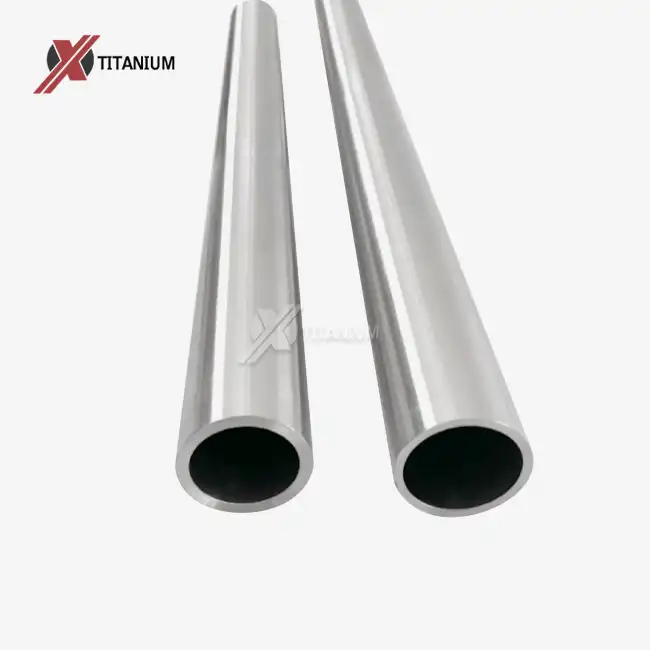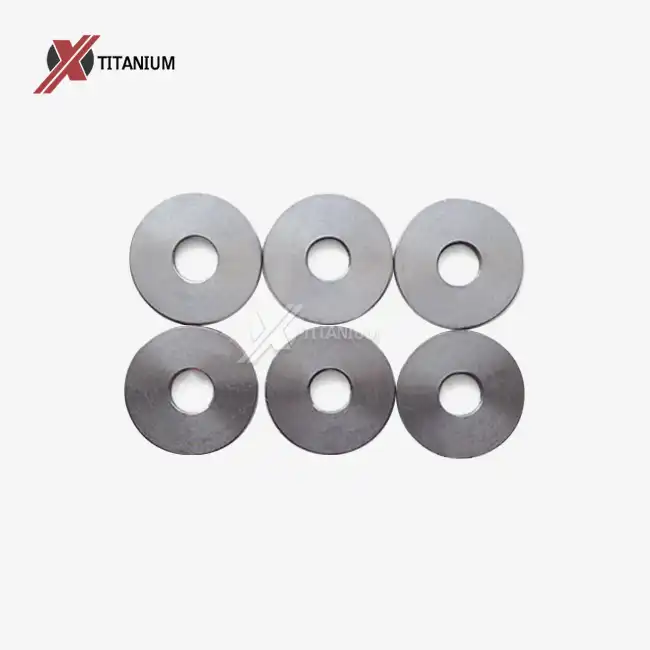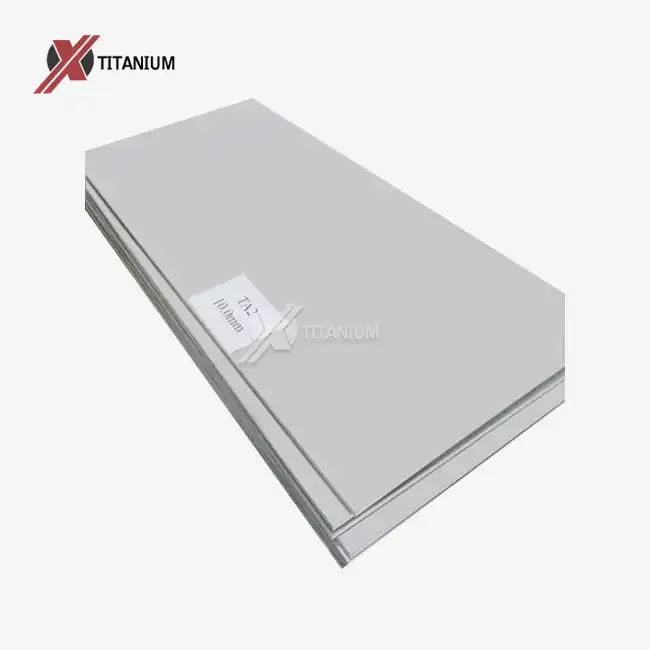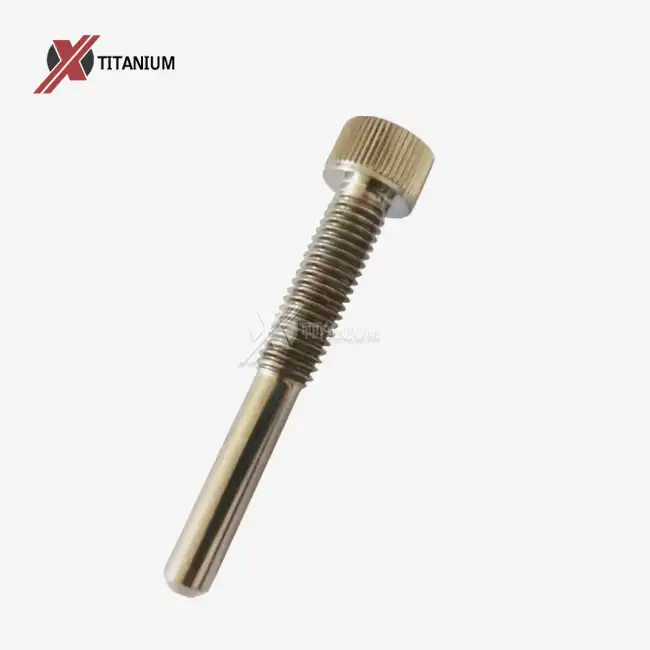The Intricacies of Titanium Flat Wire Production
Raw Material Selection and Preparation
The journey of titanium flat wire begins with the careful selection of raw materials. High-grade titanium alloys are chosen based on the intended application and desired properties of the final product. These alloys typically contain a mixture of titanium and small amounts of other elements like aluminum, vanadium, or molybdenum to enhance specific characteristics.
Once selected, the raw titanium undergoes initial processing to create ingots or billets. This often involves vacuum arc remelting (VAR) or electron beam melting (EBM) to ensure the purity and homogeneity of the metal. The resulting ingots are then subjected to primary forming operations such as forging or extrusion to create a more manageable shape for subsequent processing.
Hot Working and Intermediate Annealing
Hot working is a crucial step in the production of titanium flat wire. This process involves deforming the metal at temperatures above its recrystallization point, typically between 800°C and 950°C for titanium alloys. Hot rolling is the primary method used to reduce the cross-sectional area of the titanium and begin shaping it into a wire form.
During hot rolling, the titanium passes through a series of rollers that gradually reduce its thickness. This process not only shapes the metal but also helps to refine its grain structure, improving overall strength and ductility. However, hot working can introduce internal stresses and work hardening in the material.
To mitigate these effects, intermediate annealing steps are often performed. Annealing involves heating the titanium to a specific temperature and holding it for a predetermined time before cooling. This process relieves internal stresses, softens the metal, and promotes a more uniform grain structure. For titanium flat wire, annealing temperatures typically range from 650°C to 850°C, depending on the specific alloy and desired properties.
Cold Working and Finishing Operations
After hot working and annealing, the titanium undergoes cold working processes to achieve its final dimensions and mechanical properties. Cold rolling is the primary method used to produce flat wire, where the metal is passed through rollers at room temperature. This process not only reduces the thickness of the wire but also increases its strength through work hardening.
Multiple passes through the cold rolling mill may be required to achieve the desired thickness and width of the titanium flat wire. Between passes, the wire may undergo further annealing treatments to prevent excessive work hardening and maintain workability.
Once the final dimensions are achieved, the titanium flat wire undergoes various finishing operations. These may include:
- Pickling: An acid treatment to remove surface oxides and impurities
- Polishing: Mechanical or electrochemical processes to achieve a smooth surface finish
- Straightening: Ensuring the wire meets specified flatness and straightness tolerances
- Cutting: Trimming the wire to required lengths
The specific finishing operations depend on the intended application and customer requirements. For instance, titanium flat wire used in aerospace applications may undergo additional surface treatments to enhance fatigue resistance or corrosion protection.
Quality Control and Testing in Titanium Flat Wire Manufacturing
In-Process Quality Checks
Throughout the manufacturing process, numerous quality control checks are performed to ensure the titanium flat wire meets stringent specifications. These in-process checks include:
- Dimensional measurements: Verifying width, thickness, and cross-sectional profile
- Surface inspection: Checking for defects, scratches, or inconsistencies
- Microstructure analysis: Examining grain structure and uniformity
- Chemical composition testing: Ensuring the alloy composition remains within specified limits
Advanced techniques such as eddy current testing or ultrasonic inspection may be employed to detect internal defects or variations in material properties. These non-destructive testing methods allow manufacturers to identify and address potential issues before they manifest in the final product.
Mechanical Property Testing
The mechanical properties of titanium flat wire are crucial for its performance in various applications. As such, rigorous testing is conducted to verify these properties. Common mechanical tests include:
- Tensile testing: Measuring ultimate tensile strength, yield strength, and elongation
- Hardness testing: Determining the material's resistance to indentation
- Fatigue testing: Assessing the wire's ability to withstand cyclic loading
- Bend testing: Evaluating ductility and formability
These tests are typically performed on samples taken from each production batch, ensuring consistency and reliability across the entire production run.
Corrosion Resistance and Special Property Testing
Given titanium's reputation for excellent corrosion resistance, specific tests are often conducted to verify this property. Salt spray testing, for example, simulates harsh marine environments to assess the wire's resistance to corrosion. For titanium flat wire intended for use in chemical processing or medical applications, additional tests may be performed to evaluate resistance to specific corrosive media or biocompatibility.
Depending on the intended application, other specialized tests may be conducted. These could include:
- Electrical conductivity measurements
- Thermal stability testing
- Weldability assessments
- Stress corrosion cracking resistance evaluations
The results of these tests are meticulously documented, often forming part of the material certification provided to customers. This comprehensive quality assurance process ensures that titanium flat wire meets or exceeds industry standards and customer expectations.
Applications and Advantages of Titanium Flat Wire
Aerospace and Defense
The aerospace industry is one of the largest consumers of titanium flat wire. Its high strength-to-weight ratio makes it ideal for applications where weight reduction is critical. Titanium flat wire is used in various aircraft components, including:
- Hydraulic system tubing
- Electrical connectors
- Fasteners and springs
- Structural reinforcements
In defense applications, titanium flat wire finds use in armor plating, missile components, and naval systems where corrosion resistance is paramount.
Medical and Biomedical Applications
The biocompatibility and corrosion resistance of titanium make its flat wire form particularly valuable in the medical field. Common applications include:
- Surgical staples and sutures
- Orthodontic archwires
- Components for implantable devices
- Frames for medical instruments
Titanium's ability to osseointegrate (bond with bone) makes it an excellent choice for long-term implantable devices.
Chemical Processing and Energy Sector
In chemical processing plants and energy production facilities, titanium flat wire is prized for its exceptional corrosion resistance. It is used in:
- Heat exchangers
- Valve components
- Filtration systems
- Offshore oil and gas equipment
The wire's ability to withstand harsh chemicals and high temperatures makes it indispensable in these demanding environments.
Sports and Consumer Goods
The lightweight and durable nature of titanium flat wire has led to its adoption in various consumer and sporting goods applications, including:
- High-end eyeglass frames
- Golf club components
- Bicycle spokes and components
- Outdoor gear and equipment
In these applications, titanium flat wire offers a combination of strength, light weight, and corrosion resistance that enhances product performance and longevity.
Conclusion
The manufacturing processes for titanium flat wire are complex and multifaceted, involving a series of carefully controlled operations from raw material selection to final finishing. These processes, including hot and cold rolling, annealing, and surface treatments, are crucial in producing wire with the desired dimensions, mechanical properties, and surface characteristics. Rigorous quality control and testing ensure that the final product meets stringent industry standards and customer specifications. The unique properties of titanium flat wire, such as its high strength-to-weight ratio, excellent corrosion resistance, and biocompatibility, make it an invaluable material in aerospace, medical, chemical processing, and consumer goods industries.
At Baoji Chuanglian New Metal Material Co., Ltd., we are committed to producing high-quality titanium flat wire that meets the diverse needs of our customers across various industries. As a trusted titanium flat wire factory, we ensure superior quality, precision, and performance for every application. Our expertise in titanium product manufacturing, combined with state-of-the-art production facilities, allows us to deliver products that consistently exceed expectations. Whether you need titanium flat wire for aerospace components, medical devices, or industrial applications, we have the knowledge and capabilities to meet your requirements. For more information about our titanium flat wire products or to discuss your specific needs, please contact us at info@cltifastener.com or djy6580@aliyun.com.
FAQ
What surface finishes are available for titanium flat wire?
We offer various surface finishes including bright, polished, pickled, acid cleaned, and sandblasted surfaces to meet different application requirements.
What quality tests are performed on titanium flat wire?
Our titanium flat wire undergoes rigorous testing, including hardness tests, bending tests, and hydrostatic tests to ensure quality and performance.
What are the key features of titanium flat wire?
Titanium flat wire is known for its high corrosion resistance, low density, and good thermal stability, making it suitable for various industrial and sports applications.
References
1. Lutjering, G., & Williams, J. C. (2007). Titanium (2nd ed.). Springer-Verlag Berlin Heidelberg.
2. Froes, F. H. (2015). Titanium: Physical Metallurgy, Processing, and Applications. ASM International.
3. Peters, M., Kumpfert, J., Ward, C. H., & Leyens, C. (2003). Titanium alloys for aerospace applications. Advanced Engineering Materials, 5(6), 419-427.
4. Rack, H. J., & Qazi, J. I. (2006). Titanium alloys for biomedical applications. Materials Science and Engineering: C, 26(8), 1269-1277.
5. Boyer, R. R. (1996). An overview on the use of titanium in the aerospace industry. Materials Science and Engineering: A, 213(1-2), 103-114.




